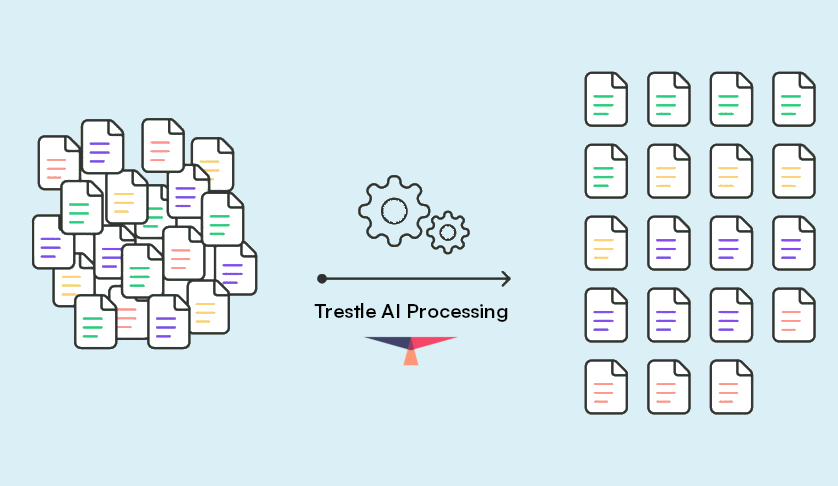How Can Software Help Solve the Construction Innovation Problem of "Crap In, Crap Out"?


Having the right tools only helps solve problems if you know how to use them correctly. After all, a tool is only as good as its user.
"Crap in, crap out" — also known as "garbage in, garbage out" (GIGO) — is a popular programming phrase. It essentially means that even the best software will only give you the same quality output as your input.
Workers in the construction industry are overworked, understaffed, and always on the go. This creates "crap in, crap out" situations when adopting new construction innovations and software. Employees often don't have the time to learn all of the program's functions and best practices, especially without a user-friendly interface.
Construction companies should look for software made specifically for the industry and educate their staff on its uses to maximize their potential.
A Tool Is Only as Good as Its User
"Crap in, crap out" or GIGO reminds us of the importance of correctly inputting data. A supplier missing a single row in a spreadsheet could throw off the entire shipment, resulting in delays, profit losses, and reputational damage.
Industries worldwide face GIGO issues, especially as businesses rely more on technology innovation. For example, international food supply chains recently introduced blockchain systems to manage data and track food products. However, the wrong input could create chain reactions of incorrect information, and the secure data structure would make it challenging to identify the problem.
"Correct data" extends far beyond your numbers and documentation. Incorrectly organizing information or misusing specific software functions can drastically change your output.
For example, an operation team's file organization will only work if each teammate sticks to the plan. Even the best construction-specific software is essentially worthless if your team isn't using it properly.
Why Is "Crap In, Crap Out" Common in Construction?
Proper input and software usage are vital in the construction sector, impacting projects' schedules, budgets, and safety. Nevertheless, GIGO remains a prominent issue, especially when construction companies innovate.
Manpower and Labor
Labor shortages are among the most common explanations for "crap in" mistakes. Despite the construction sector's record-high number of employees, the workforce still doesn't meet market demands. Studies predict that the construction industry must recruit half a million new workers — on top of its standard hiring pace — to meet 2024's market demands.
Many general contractors don't have large enough teams to complete their operations alone. As a result, they must hire subcontractors, skip smaller projects, or require employees to take on multiple responsibilities.
Construction workers who wear multiple hats are more likely to experience burnout and make mistakes, especially if they're untrained in their new responsibilities. This burnout can cause them to misunderstand their new procedures or overlook data input errors.
Improper Training or Understanding
Construction innovation and software are fine-tuned for the industry, making it easier to track supplies, predict outcomes, and manage multiple teams simultaneously. However, not enough leaders take the time to train their teams to use their software — some leaders don't even learn it themselves.
Many construction teams skip over training and other essential steps to account for staff shortages. Under the "garbage in, garbage out" theory, this results in incorrect data, disorganized files, and inaccessible information.
Non-Construction Software
Some construction companies face data and storage issues after adopting non-industry-specific software. For example, apps built for hybrid work may help multiple teams/departments stay in touch. However, these are usually built for in-office and at-home use and may not operate as well from construction sites, especially if your team only has cell phones with poor internet connections.
While programs like Microsoft Excel work for basic spreadsheets, programs made for construction are optimized for the industry's operations and best practices. So, you should only invest in high-quality, construction-based software to maximize your data's input and output.
Errors Caused by Subcontractors and Suppliers
Many general contractors also face issues with vendor-caused errors. Like any team, suppliers and subcontractors are prone to making mistakes that reflect poorly on your project. For example, suppliers may incorrectly record their deliveries, while subcontractor employees may not be adequately trained for your project. This can lead to safety issues, supply delays, profit losses, and other project setbacks.
Many general contractors adopt vendor management software to avoid these risks. These solutions track subcontractors' data, performances, and feedback across multiple projects. This level of organization can help you identify and prevent frequent vendor mistakes for better transparency and accountability.
How Can User Education Solve the GIGO Issue?
User education is critical to construction innovation. Team leaders should take the time to learn about the functions of their new software before training their teams. By doing so, they may discover specific uses, benefits, and risks they would've otherwise missed.
When training teams, don't just give everyone their login information and expect them to learn independently. Walking everyone through each step guarantees you implement your new program on the right foot, reducing the risk of repeat mistakes.
The best software training often consists of both group and one-on-one discussions. When introducing your solution, explain how it can benefit your team's operations and specific responsibilities.
Many employees may need additional time to adopt their new procedures, so be patient and encourage teammates to help each other out. Some companies even introduce incentives, such as lunches and rewards, to make their training feel more worthwhile.
Contact the software's developers or owners to see if they offer program-specific training or resources. Maintaining a positive relationship with the software developers may also help you resolve problems and bugs later on.
Digital Solutions for Construction Innovation
Having the right tools and knowing how to use them is essential in the modern construction industry. The best programs offer easy-to-use interfaces but don't limit functionality.
Trestle's vendor management software helps you properly manage subcontractor and supplier information within an easy-to-use platform. Schedule a demo today to learn how this construction innovation can help your business.
Keep Reading





